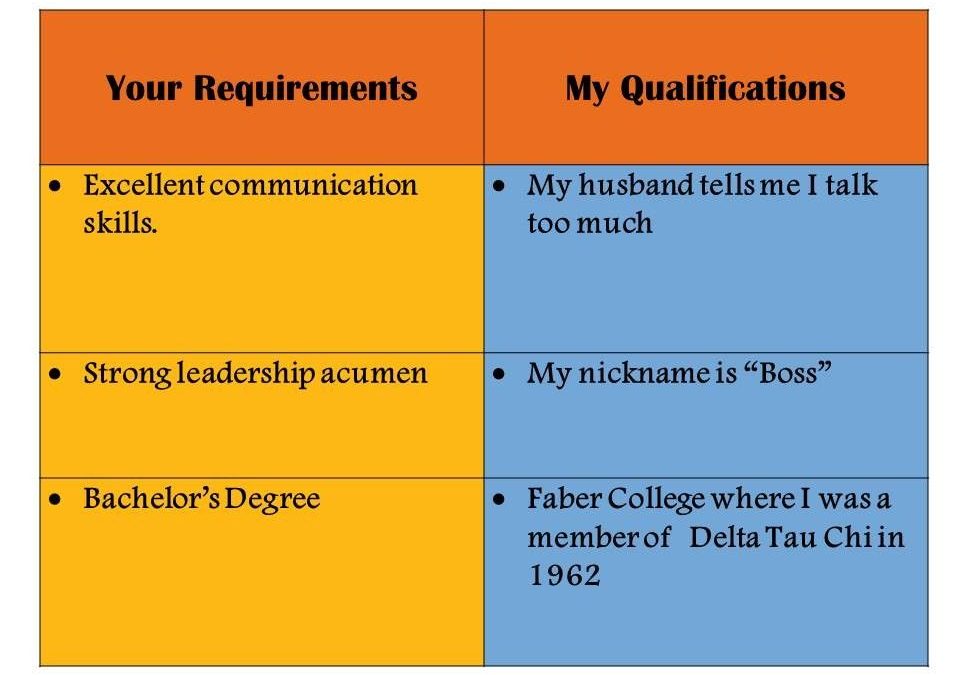Talencio is a very successful and growing company. One of the elements contributing to that success is the Talencio “T” Chart. I asked Paula Norbom, President and owner of Talencio, to tell me about this tool and why she thinks it works.
Paula talked about an insight she had years ago about position descriptions: a job posting is really just a request for proposal (RFP). All the company is doing is asking for a set of services in their job posting. Most individuals utilize their resume as their response to provide those services. However, because business today is done at such high speeds, and resumes are seldom read in detail until the hire is almost made, Paula feels that applicants need to show how they meet the potential employer’s needs in the cover letter and set it apart so that they can’t miss it! That is where the T-Chart comes in.
The T-Chart is exactly what the name implies – On one side of the T are the skills and knowledge that the employer has highlighted in the position description or posting, preferably using the employer’s exact words. On the other side of the T are the applicant’s qualifications – the skills and knowledge for each of those items and proof points or short examples that show the applicant has the relevant experience. The pluses of making this the prime content of a cover letter are:
- It shows that the applicant has spent serious time with the position description and has analyzed what is needed
- It displays how the applicant meets the exact needs of the position as well as highlights any areas where qualifications may be slightly different from what the employer desires. In the latter case, applicants should focus on transferable skills and be prepared to further discuss these in an interview.
- It highlights writing skills. Paula says this is an extra bonus for the employers who have been burned by assuming that all white-collar workers are competent writers.
- Proof points, or stories summarizing related experience lend significant credibility to the applicant. The T-Chart is not a check the box exercise. It takes time to develop and communicate the right story.
- It indicates that the applicant is customer service focused. HR departments and hiring managers love the T-Chart because they do not have to hunt through resumes to find the relevant experience — it is nicely summarized in a table.
- Applicants are competing with many other candidates. The T-Chart significantly sets applicants apart.
- When an applicant is selected for an interview, most of the work to prepare has been done!
Paula tells the story of the last time she was in the job seeking mode – she used the T-chart and received a favorable response from every employer she contacted. This was a winning experience that she has used to help build success at Talencio.
It is also interesting to note that relatively few other firms or individuals use such a direct method of showing their match to company needs. This approach, however, fits the increasing focus of employers on making the skill and knowledge match when hiring either contractors or direct employees.
Resources:
